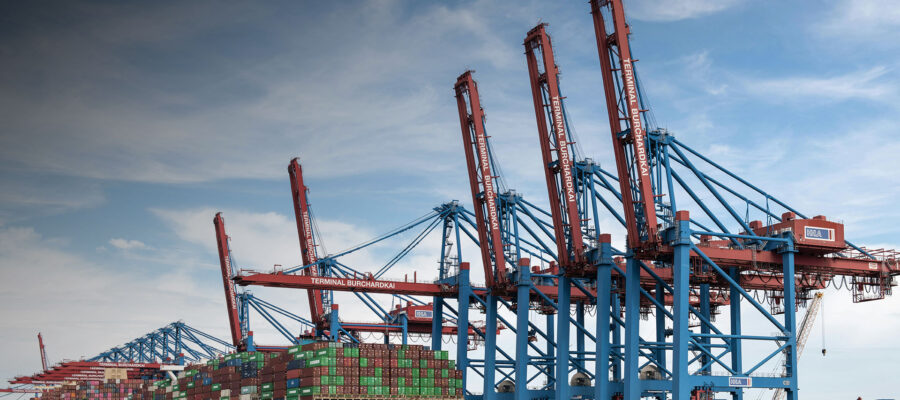This post has already been read 27561 times!
Modern military operations are becoming increasingly complex, requiring seamless coordination across multiple domains—land, sea, air, space, and cyberspace. Effective logistics and supply chain management are critical to ensuring mission success, yet many current systems remain fragmented, inflexible, and unable to adapt to the evolving challenges of modern warfare.
To maintain operational advantage, defense organizations must shift from traditional siloed systems to a next-generation, networked approach to supply chain management. A modern defense supply chain platform must incorporate key capabilities to enhance operational readiness, resilience, and efficiency.
End-to-End Visibility and Real-Time Actionability
Visibility alone is not enough. A modern platform must go beyond simple data aggregation and provide real-time actionable insights. The ability to continuously track assets, supplies, and maintenance needs from the strategic to the tactical level ensures informed decision-making. Commanders and logisticians must have the ability to not only see their entire supply chain in real time but also be able to act immediately through the platform to address disruptions, reallocate resources, and optimize logistics flows.
AI-Driven Predictive and Prescriptive Logistics
Artificial intelligence (AI) and machine learning (ML) must be embedded within supply chain platforms to enable predictive analytics and autonomous decision-making. These technologies can analyze vast amounts of data to forecast demand, anticipate supply chain disruptions, and optimize resource allocation. AI-driven recommendations help decision-makers take preemptive action, ensuring supplies reach the right place at the right time with minimal waste and cost.
Modern Defense Supply Chains: The Essential Capabilities for Multi-Domain Operations Share on XAdaptive and Deployed Logistics Capabilities
In contested or austere environments where connectivity is limited or nonexistent, defense operations require a platform that can function offline while maintaining synchronization with the broader network. A modern supply chain solution must include disconnected and deployed capabilities, enabling logistics personnel to execute essential functions without relying on continuous network access. Once reconnected, the system should seamlessly synchronize data, ensuring operational continuity.
Multi-Tier, Multi-Party Collaboration
A defense supply chain is a complex ecosystem involving multiple stakeholders, from government agencies to commercial suppliers and allied partners. A next-generation platform must facilitate real-time collaboration across all echelons and tiers of the supply chain. It should allow for a single version of the truth (SVOT), ensuring that all stakeholders operate with synchronized, accurate, and up-to-date information.
Seamless Integration Across Legacy and Modern Systems
Modernization does not mean wholesale replacement. Instead, an effective defense supply chain platform should integrate seamlessly with existing enterprise resource planning (ERP) systems, legacy logistics platforms, and emerging technologies. With backward-compatible APIs, master data management, and open integration frameworks, these platforms should bridge the gap between traditional and digital supply chain systems, enhancing capabilities without causing disruption.
Secure, Modular, and Cloud-Agnostic Architecture
Security remains paramount in military logistics. A modern supply chain platform must operate within stringent cybersecurity frameworks, ensuring data access is strictly managed and controlled. The architecture should be cloud-agnostic, allowing deployment across various secure environments while maintaining the flexibility to scale, adapt, and support evolving mission needs. A modular design with a low-code development framework enables rapid customization and continuous innovation.
Optimized Planning and Execution for Full-Spectrum Operations
Defense supply chains must seamlessly link planning and execution in real time. Traditional systems often treat planning and execution as separate functions, leading to inefficiencies and delays. A modern platform must enable real-time synchronization of logistics planning with operational execution, ensuring agile response to dynamic mission requirements and environmental conditions.
To maintain operational advantage, defense organizations must shift from traditional siloed systems to a next-generation, networked approach to supply chain management. Share on XAudit-Ready Transparency and Compliance
Given the stringent accountability requirements in defense operations, a modern supply chain platform must support robust audit capabilities. It should facilitate seamless tracking of assets and transactions, maintain chain-of-custody records, and generate comprehensive compliance reports. This ensures transparency and readiness for audits while improving overall financial and operational accountability.
Supporting Joint and Coalition Operations
Interoperability is essential for modern defense logistics, particularly in joint and coalition operations. A supply chain platform should align with Joint Logistics Enterprise (JLEnt) standards, integrate with Defense Logistics Management Standards (DLMS), and support cross-agency collaboration. By ensuring seamless communication across national and allied defense networks, the platform enhances global mission effectiveness.
Building the Defense Supply Chain of the Future
The complexity and scale of modern defense operations demand a new approach to supply chain management. A truly effective platform must support and seamlessly integrate real-time visibility, AI-driven logistics, disconnected operations, multi-party collaboration, secure architecture, and audit-ready compliance. By embracing these capabilities, defense organizations can enhance operational readiness, reduce costs, and maintain a strategic advantage in an unpredictable world.
Organizations looking to adopt such an advanced platform should seek solutions that align with these essential capabilities. The future of defense logistics depends on intelligent, networked, and adaptable supply chains that support mission success at every level.
If you’d like to learn more, I recommend you read: Leveraging Data Awareness to Extend Operational Reach in Multi-Domain Operations.



